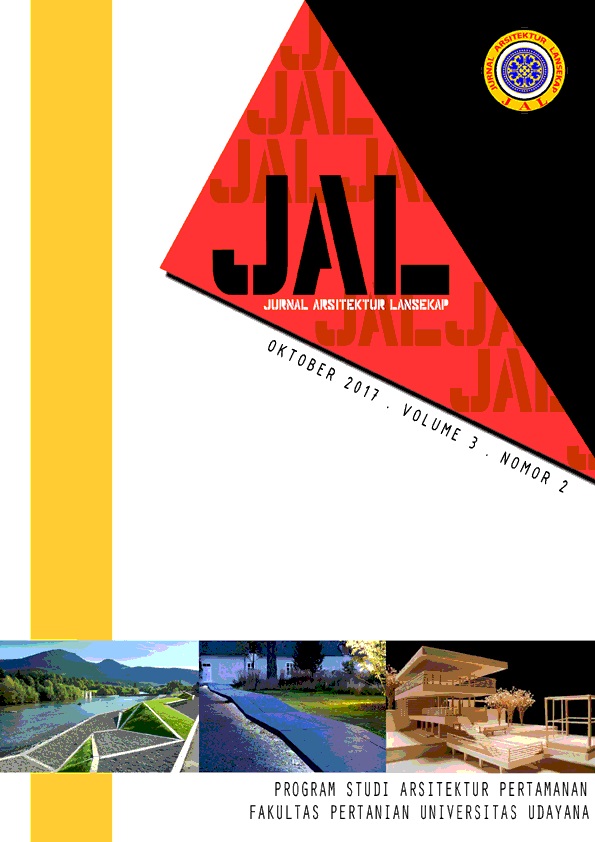Identifikasi Tanaman Obat-Obatan Sebagai Elemen Lunak Lansekap di Kecamatan Kediri, Kabupaten Tabanan, Provinsi Bali
Abstract
Indonesia is an agricultural country known for the wealth of species and different kinds of plants. Diversity of natural resources make Indonesia has a lot of biodiversity as well as the diversity of traditional medical plants, or more commonly known herbs.Medical plants flowering in the regional in Kediri, Tabanan regency, Province of Bali still very little is used as an softscape element of landscape, so it has not been used optimally. Presumably there are many kinds of medical plant other throughout in Kediri, Tabanan regency, Province of Bali either cultivated or growing wild. Have data regarding a kinds of medical plants in the region is very important both for science and conservation. Medical plants have potential as an ornamental plant, because the flowers can give a feeling of luxury, so there will be a sense of pride by the owner. Medical plants can be used as landscape softcape elements, besides being able to used aesthetics value of the plants and when necessary for health will be easier to get it. This method of technique sampling used survey, questionnaires, and interview. The results of this those there are 52 species of medical plants which are grouped into five flowering habitus are bushes, shrubs, water plants, trees, and ground cover.There are four function of medical plants has inventory and identification as an element of landscape design is as a railings, shade, absorbing pollutants and aesthetics value.
Downloads
An author who publishes in the Jurnal Arsitektur Lansekap (JAL) agrees to the following terms:
- Author retains the copyright and grants the journal the right of first publication of the work simultaneously licensed under the Creative Commons Attribution-ShareAlike 4.0 License that allows others to share the work with an acknowledgement of the work's authorship and initial publication in this journal
- Author is able to enter into separate, additional contractual arrangements for the non-exclusive distribution of the journal's published version of the work (e.g., post it to an institutional repository or publish it in a book) with the acknowledgement of its initial publication in this journal.
- Author is permitted and encouraged to post his/her work online (e.g., in institutional repositories or on their website) prior to and during the submission process, as it can lead to productive exchanges, as well as earlier and greater citation of the published work (See The Effect of Open Access).
Read more about the Creative Commons Attribution-ShareAlike 4.0 Licence here: https://creativecommons.org/licenses/by-sa/4.0/.







